Impact of Deforestation on Rainforest Ecosystems
- August 21, 2024
- 0 comment
Deforestation has a profound impact on rainforest ecosystems, triggering a cascade of environmental and ecological consequences. As vast areas of forest are cleared, often for agriculture, logging, or infrastructure development, the intricate web of life within these ecosystems is disrupted. Rainforests, which are home to an incredible diversity of plant and animal species, face habitat loss that can lead to the extinction of many species, particularly those that are endemic and cannot survive elsewhere. The removal of trees also destabilizes the soil, leading to erosion, and disrupting the water cycle, affecting local and global weather patterns.

Moreover, deforestation contributes significantly to climate change by releasing large amounts of stored carbon dioxide into the atmosphere, exacerbating the greenhouse effect. The loss of these vital ecosystems diminishes the Earth’s capacity to regulate the climate, sequester carbon, and maintain biodiversity, making deforestation a critical issue for environmental sustainability and global health.
Table of Content
- Causes of Deforestation
- Loss of Biodiversity
- Soil Degradation and Erosion
- Disruption of the Water Cycle
- Contribution to Climate Change
- Impact on Indigenous Communities
- Global Implications of Rainforest Deforestation
- FAQs
Causes of Deforestation
Agricultural Expansion
Agricultural expansion is one of the most significant drivers of deforestation in rainforest ecosystems. As the global demand for food, particularly for crops like soy and palm oil, continues to rise, vast tracts of rainforest are cleared to make way for plantations and farmland. This expansion often involves the slash-and-burn technique, where large areas of forest are cut down and set on fire to clear the land quickly. The conversion of forests into agricultural land not only destroys the habitat but also leads to soil degradation and the loss of biodiversity, as many species cannot survive in the altered environment.
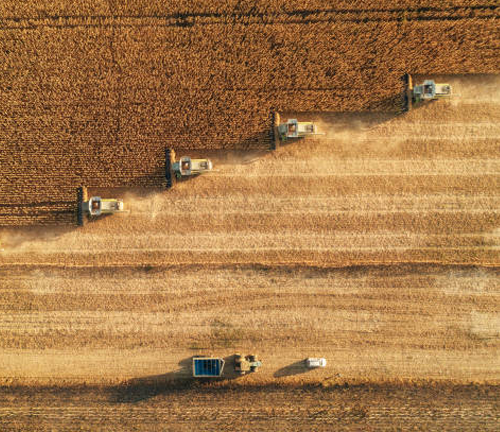
Logging and Timber Extraction
The demand for timber and wood products has led to extensive logging in rainforests, further contributing to deforestation. Both legal and illegal logging operations remove valuable hardwoods from the forest, disrupting the ecological balance. Logging roads open up previously inaccessible areas to further deforestation, as they facilitate access for agriculture and other activities. The extraction of timber not only reduces forest cover but also affects the forest’s structure, leading to habitat loss for countless species and disrupting the natural processes that sustain the ecosystem.
Infrastructure Development
The construction of infrastructure, including roads, dams, and urban settlements, plays a critical role in rainforest deforestation. As countries develop, there is often a push to build roads through forests to connect remote areas, which in turn opens up the land for further deforestation. Infrastructure projects, such as hydroelectric dams, lead to the flooding of large forest areas, resulting in the displacement of both wildlife and local communities. The expansion of urban areas into forested regions further accelerates the loss of rainforest cover, leading to irreversible changes in the ecosystem.
Mining Activities
Mining for minerals, oil, and gas has become a significant contributor to deforestation in rainforests. The extraction process often requires the clearing of large areas of forest, leading to habitat destruction and pollution of the surrounding environment. Mining operations can cause long-term damage to the forest ecosystem by contaminating water sources, degrading soil quality, and disrupting the lives of indigenous communities. The scars left by mining are often difficult to rehabilitate, leaving behind barren landscapes where once-thriving rainforests stood.

Fires and Other Human Activities
Fires, both intentional and accidental, are a major cause of deforestation in rainforests. Farmers often use fire to clear land for agriculture, but these fires can quickly spread out of control, consuming vast areas of forest. Additionally, activities such as cattle ranching, illegal drug cultivation, and the extraction of non-timber forest products contribute to deforestation. These human activities not only reduce forest cover but also degrade the remaining forest, making it more susceptible to future deforestation and less capable of supporting biodiversity.
Loss of Biodiversity
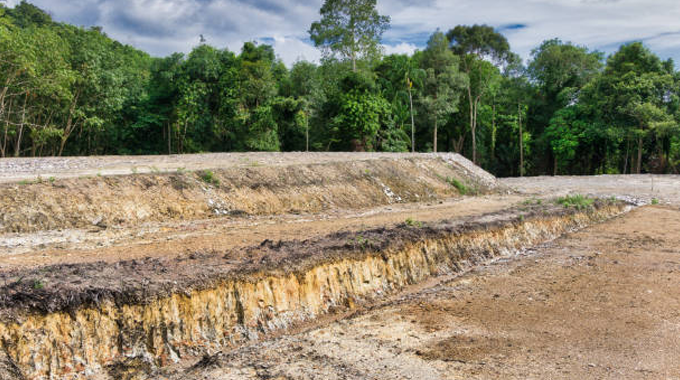
Habitat Destruction and Fragmentation
Deforestation leads to the destruction and fragmentation of habitats, posing a severe threat to the biodiversity of rainforest ecosystems. Many species in rainforests are highly specialized, relying on specific habitats for survival. When these habitats are destroyed or fragmented, species are unable to find the resources they need, leading to population declines and, in some cases, extinction. Fragmentation also isolates populations, reducing genetic diversity and making species more vulnerable to environmental changes and disease.
Threats to Endemic Species
Rainforests are home to a high number of endemic species, meaning they are found nowhere else on Earth. Deforestation puts these species at extreme risk, as their limited distribution makes them particularly vulnerable to habitat loss. The destruction of rainforests can lead to the extinction of these unique species, resulting in the loss of irreplaceable genetic resources and the impoverishment of global biodiversity.
Extinction of Flora and Fauna
The loss of rainforest ecosystems due to deforestation has led to the extinction of countless plant and animal species. As forests are cleared, species that cannot adapt to the new conditions or migrate to other areas are driven to extinction. The extinction of species disrupts the balance of the ecosystem, leading to the collapse of food webs and the loss of ecosystem services that are vital to both the environment and human society.
Disruption of Food Chains and Ecosystem Services
Deforestation disrupts the complex food chains that sustain rainforest ecosystems. The removal of keystone species can have a cascading effect, leading to the decline of other species that depend on them. This disruption of food chains can alter the structure and function of the ecosystem, reducing its ability to provide essential services such as pollination, seed dispersal, and nutrient cycling. The loss of these services has far-reaching implications for both the environment and human populations that rely on healthy ecosystems for their livelihoods.
Soil Degradation and Erosion
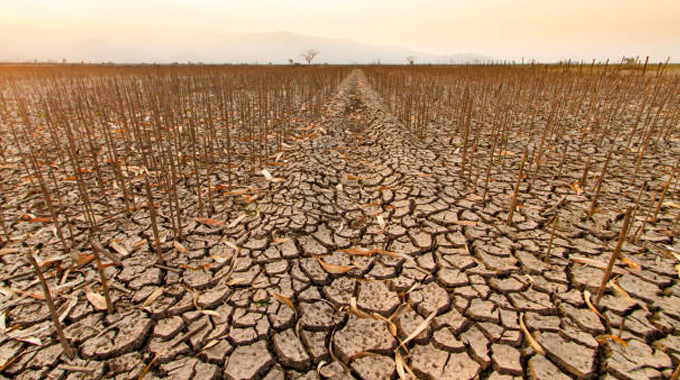
Loss of Vegetation Cover and Root Systems
The removal of trees and other vegetation during deforestation results in the loss of root systems that help stabilize the soil. Without these roots, the soil becomes more susceptible to erosion, as there is nothing to hold it in place. The loss of vegetation cover also reduces the soil’s ability to retain water, leading to further degradation and making the land less suitable for agriculture or reforestation efforts.
Increased Soil Erosion and Landslides
Deforestation significantly increases the risk of soil erosion and landslides, particularly in hilly and mountainous regions. The removal of trees and other vegetation exposes the soil to the elements, making it more vulnerable to being washed away by rain. This not only leads to the loss of fertile topsoil but also contributes to the silting of rivers and streams, which can cause flooding and disrupt aquatic ecosystems. In extreme cases, deforestation can trigger landslides, leading to the loss of human lives and property.
Impact on Soil Fertility and Agriculture
The degradation of soil caused by deforestation has a direct impact on agriculture. As the soil loses its fertility, it becomes increasingly difficult to grow crops, leading to a decline in agricultural productivity. This can create a vicious cycle, where farmers clear more forest land in an attempt to maintain crop yields, further exacerbating deforestation and soil degradation. The loss of fertile soil also affects reforestation efforts, making it more challenging to restore degraded lands to their former state.
Disruption of the Water Cycle

Reduced Rainfall and Altered Weather Patterns
Rainforests play a crucial role in regulating the water cycle by releasing water vapor into the atmosphere, which contributes to rainfall both locally and globally. Deforestation disrupts this process, leading to reduced rainfall and altered weather patterns. The loss of forest cover can cause a decline in precipitation, leading to droughts in regions that were once lush and wet. These changes in weather patterns can have devastating effects on agriculture, water availability, and the overall health of the ecosystem.
Impact on River Systems and Freshwater Availability
The disruption of the water cycle due to deforestation also affects river systems and freshwater availability. As forests are cleared, the amount of water that infiltrates the soil and replenishes groundwater is reduced. This can lead to lower water levels in rivers and streams, affecting both human populations and wildlife that depend on these water sources. Additionally, the increased runoff from deforested areas can lead to sedimentation and pollution of rivers, further degrading water quality and harming aquatic ecosystems.
Increased Frequency of Flooding and Drought
Deforestation contributes to the increased frequency of both flooding and drought, as the removal of trees affects the natural regulation of water flow. Without trees to absorb and slowly release water, rainfall can lead to flash floods, causing significant damage to both the environment and human infrastructure. Conversely, the loss of trees also reduces the soil’s ability to retain moisture, leading to prolonged dry periods and droughts. These extreme weather events have far-reaching consequences for both ecosystems and human communities.
Contribution to Climate Change
Release of Stored Carbon Dioxide and Other Greenhouse Gases
Rainforests act as vital carbon sinks, storing large amounts of carbon dioxide (CO2) in their biomass. When forests are cleared, this stored carbon is released into the atmosphere, contributing to the accumulation of greenhouse gases and exacerbating climate change. The burning of trees during deforestation also releases other greenhouse gases, such as methane (CH4) and nitrous oxide (N2O), further intensifying the greenhouse effect and accelerating global warming.
Reduction in Carbon Sequestration Capacity
The loss of rainforest ecosystems due to deforestation reduces the Earth’s capacity to sequester carbon. As forests are cleared, their ability to absorb CO2 from the atmosphere diminishes, leading to higher concentrations of this greenhouse gas. This reduction in carbon sequestration capacity has a significant impact on global climate regulation, as the loss of rainforests contributes to the overall warming of the planet and the intensification of climate-related phenomena.
Feedback Loops and Global Warming
Deforestation can trigger feedback loops that further exacerbate global warming. For example, the loss of forests reduces the Earth’s albedo, leading to increased absorption of solar radiation and higher temperatures. Additionally, as temperatures rise, the risk of wildfires increases, leading to further deforestation and the release of more greenhouse gases. These feedback loops create a vicious cycle, where deforestation and climate change reinforce each other, making it increasingly difficult to mitigate their impacts.
Impact on Indigenous Communities
Loss of Traditional Lands and Resources
Indigenous communities that have lived in harmony with rainforest ecosystems for generations are among the most affected by deforestation. The clearing of forests often leads to the loss of traditional lands and resources that are essential for the survival of these communities. Without access to the forests, indigenous peoples lose their livelihoods, cultural practices, and connection to the land, leading to profound social and economic challenges.
Cultural and Social Displacement
The displacement of indigenous communities due to deforestation has far-reaching cultural and social implications. As these communities are forced to leave their ancestral lands, they often face difficulties in adapting to new environments and integrating into broader society. This displacement can lead to the loss of traditional knowledge, languages, and cultural practices, as well as increased poverty and marginalization. The destruction of rainforests not only the physical landscape but also the cultural heritage of the indigenous peoples who have long been its stewards.
Challenges to Sustainable Livelihoods
Deforestation poses significant challenges to the sustainable livelihoods of indigenous communities. The loss of forests deprives these communities of essential resources, such as food, medicine, and materials for shelter and crafts. As their traditional ways of life are disrupted, indigenous peoples may be forced to seek alternative livelihoods that are often less sustainable and more harmful to the environment. The degradation of rainforest ecosystems thus threatens the long-term survival and well-being of indigenous cultures and communities.
Global Implications of Rainforest Deforestation
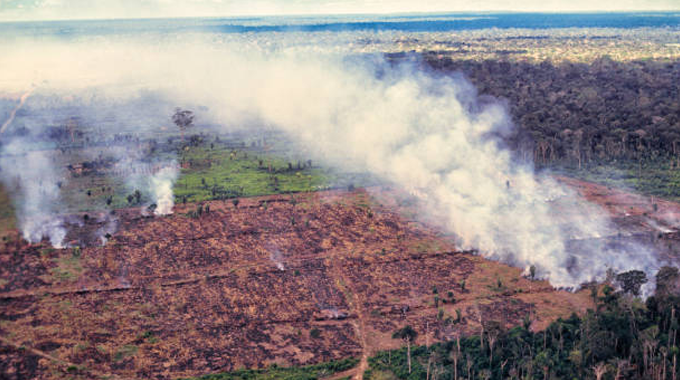
Effects on Global Biodiversity
The impact of rainforest deforestation extends far beyond the immediate region, affecting global biodiversity. Rainforests are home to a significant proportion of the world’s species, many of which are not found anywhere else. The loss of these ecosystems leads to a decline in global biodiversity, reducing the resilience of the planet’s ecosystems to environmental changes and increasing the risk of extinction for many species. The loss of biodiversity also diminishes the genetic resources available for agriculture, medicine, and other human needs.
Impact on Global Climate Patterns
Rainforest deforestation has a profound impact on global climate patterns. The loss of forests affects the Earth’s ability to regulate temperature and precipitation, leading to changes in weather patterns around the world. The reduction in forest cover can contribute to more extreme weather events, such as hurricanes, droughts, and heat waves, which have devastating effects on both human populations and natural ecosystems. The global impact of rainforest deforestation underscores the importance of protecting these vital ecosystems to maintain climate stability.
The Role of Rainforests in Global Ecological Balance
Rainforests play a critical role in maintaining the global ecological balance. They act as carbon sinks, regulate the water cycle, and support a vast array of plant and animal species. The loss of these ecosystems disrupts the delicate balance that sustains life on Earth, leading to a range of environmental challenges, from climate change to biodiversity loss. Protecting rainforests is not just a local issue but a global imperative, as the health of these ecosystems is inextricably linked to the health of the planet and all its inhabitants.
Frequently Asked Questions (FAQs)
1. What is deforestation, and why is it happening in rainforests?
Deforestation refers to the large-scale clearing of forests, often for agricultural expansion, logging, infrastructure development, and mining. In rainforests, this is driven by the demand for land, timber, and natural resources.
2. How does deforestation affect biodiversity in rainforests?
Deforestation leads to habitat destruction, fragmentation, and loss, which threaten the survival of countless plant and animal species. Many species that are endemic to rainforests face extinction due to the loss of their natural habitat.
3. What are the consequences of deforestation on soil health?
The removal of trees and vegetation destabilizes the soil, leading to erosion, landslides, and a decline in soil fertility. This degradation makes the land less productive for agriculture and more challenging to rehabilitate.
4. How does deforestation impact the water cycle in rainforest regions?
Deforestation disrupts the water cycle by reducing rainfall, altering weather patterns, and decreasing the availability of freshwater. This can lead to more frequent flooding, droughts, and changes in river systems.
5. In what ways does deforestation contribute to climate change?
Rainforests act as carbon sinks, storing large amounts of carbon dioxide. When forests are cleared, this carbon is released into the atmosphere, contributing to the greenhouse effect and accelerating global warming.
6. What is the impact of deforestation on indigenous communities?
Deforestation leads to the loss of traditional lands and resources for indigenous communities, resulting in cultural displacement, loss of livelihoods, and social challenges.
7. What are the global implications of rainforest deforestation?
The loss of rainforests affects global biodiversity, climate patterns, and ecological balance. It reduces the Earth’s ability to sequester carbon and regulate climate, leading to more extreme weather events and environmental instability.
8. What are some solutions to combat deforestation in rainforests?
Solutions include reforestation, sustainable land-use practices, the creation of protected areas, and international policies aimed at reducing deforestation and promoting conservation efforts.

Gilbert Griffin
Forestry AuthorGilbert Griffin is a forest management expert specializing in sustainable practices, forest health, conservation, and land management. With extensive knowledge in pest control, disease management, and habitat restoration, Gilbert develops strategies to preserve forest ecosystems and biodiversity. Passionate about the natural world, Gilbert adapts to changes in forest management and stays updated through continuous learning. Gilbert also provides seasonal advice to optimize forest care throughout the year.


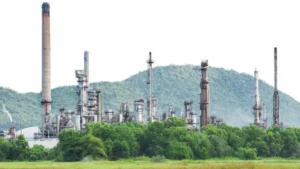
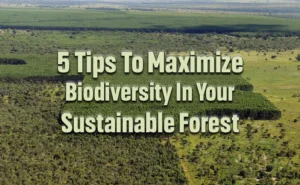
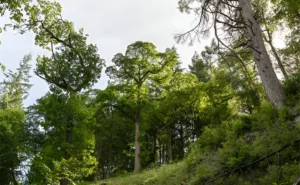


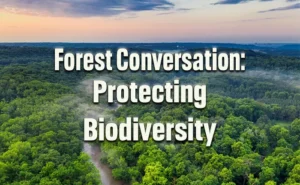


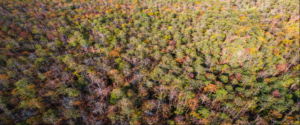

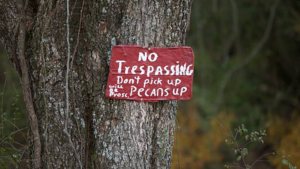
Leave your comment